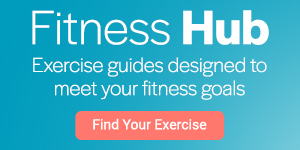Yoga Vs Pilates - Which one should I do?
Yoga Vs Pilates - Which one should I do?
People view yoga and Pilates as two peas in a pod because they’re low-impact exercises which focus on the mind-body connection. But, despite sharing some similarities, there are clear distinctions between the two and benefits of incorporating both into your workout. Core Balance reveals all.
Short on time? Click on the contents below to jump to each section.


What is Yoga?
No one could accuse yoga of being a fitness fad. Some claim it’s over 5,000 years old, others claim it’s closer to 3,000 years old. Either way, it’s believed to have started as a spiritual practise in ancient India before being introduced to the west in the 1900s.
Yoga requires you to carry out different poses (asanas) whilst practising meditative breathing techniques (pranayama). Focussing on your movements and breathing is recognised as a form of mindfulness because it frees your mind of other thoughts. For this reason, yoga can reduce stress and improve your mental wellbeing.

What is Pilates?
Pilates was developed in the 1920s by a German fellow named Joseph Pilates. After moving to England in 1912, Joseph taught self-defence at Scotland Yard before being imprisoned at the outbreak of World War I. It was during his incarceration that he developed an exercise called ‘Contrology’ which later became Pilates.
Like yoga, Pilates is a mind-body exercise which requires you to focus on your breathing throughout each movement, but with an emphasis on stretching your muscles and improving core strength. Joseph taught Pilates after the war to help soldiers recover from injury, so it should come as no surprise that it’s a popular form of treatment with physiotherapists today.
Benefits of Yoga
Once you’ve adopted a yoga pose, you normally have to hold it for a few, slow breaths before transitioning into a new one. There are five types of pose: standing, balancing, backbends, seated, and resting. Whilst some are easy for beginners, others are best practised by experienced yogis. All are beneficial to both your physical and mental health:
- Yoga stretches your muscles to improve your flexibility and joint mobility.
- Sculpts and tones your muscles. And yes, that includes your abs!
- Increases your cardiovascular health to boost your fitness and performance.
- Strengthens your core muscles to improve your balance and posture.
- Improves your mental wellbeing to reduce symptoms of stress and anxiety.

Benefits of Pilates
Unlike yoga, Pilates requires you to adopt a stationary position and then challenge your core by moving your arms or legs. Pilates exercises strengthen your body in an even way and tend to be less strenuous and complex than yoga poses. Although it’s a low-intensity workout, which is easily accessible to young and old, the benefits of practising Pilates are huge:
- Pilates is a highly effective way to improve your core strength and balance.
- Helps to stabilise your spine and increase your muscle coordination.
- Improves your posture. Great for reducing your risk of lower back injuries!
- As a low-impact exercise, it’s an excellent way to rebuild strength after injury.
- Breathing throughout each exercise lowers stress and increases relaxation.

Should I practise both?
Yes, there's no reason you shouldn't practise both, although we wouldn’t recommend practising advanced yoga if you have a weak core. Some back-bending poses require you to have the flexibility of an octopus, so If you lack core strength, there’s a chance you’ll tie yourself in knots and develop sprains, strains, and compression fractures.
Because it focusses on improving your core strength, it’s best to practise Pilates first. Look at it as walking before you can run. By strengthening your core, you’ll improve your muscle coordination, balance, and posture which are key to reducing your risk of injury during yoga. Desperate to jump straight into yoga? Start off by doing simple poses whilst regularly practising Pilates.
What do I need for Yoga?
| 6mm PVC Mat | Yoga Block & Strap | Gym Ball |
| Perfect for balance & grounding | Provides support & deeper stretches | Engages core muscles to help maintain balance |



What do I need for Pilates?
| 10mm NBR Mat | Pilates Ring | Mini Pilates Ball |
| Reduces impact on joints & muscles | Helps tone & strengthen muscles | Improves body alignment & core |




